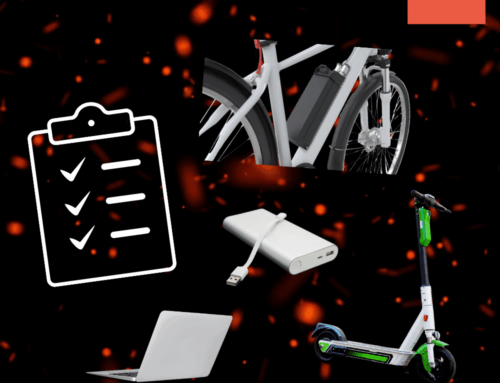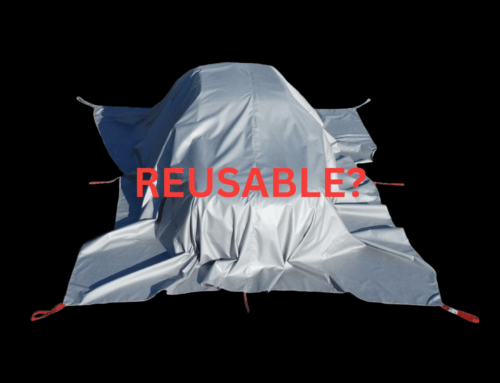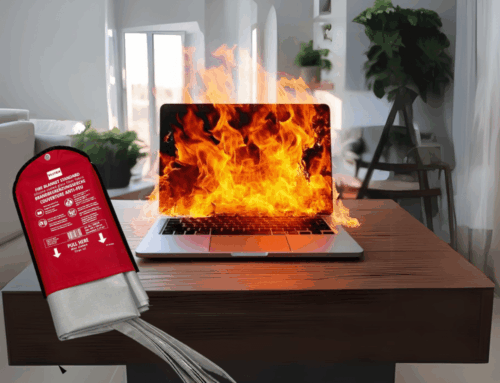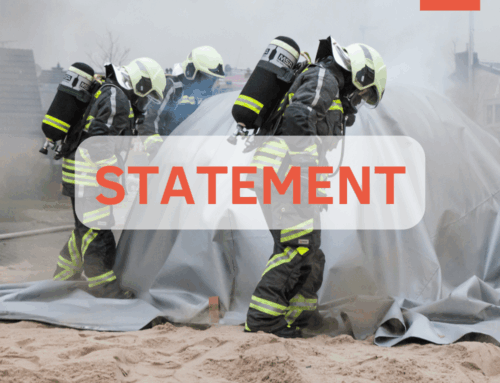
The advantages of lithium-ion batteries are obvious: compact design, high energy density, rechargeable. This is why they are so popular and firmly anchored in our everyday lives: they can be found in smartphones, laptops, power banks, e-bikes, tools, toys and household appliances.
However, the widespread use of batteries also increases the risk - not because every battery is automatically dangerous, but because the number of devices in the home, workshop or company increases the overall risk. What's more, damage is not always visible from the outside and can lead to spontaneous combustion even after several days or weeks.
We take a sober look at the causes and preventive measures - without panic, but with the necessary respect for possible consequences.
Table of contents
How high is the risk of fire with lithium-ion batteries?
The good news first:
The probability of a Li-Io battery failing and causing a fire without external influences is very low.
But:
The tricky thing is that a damaged battery is often not recognizable from the outside. If a battery is inflated or the housing is deformed, caution is advised. However, internal damage can also be caused by shocks or charging with the wrong charger.
The average household has between 25 and 50 lithium-based energy storage units. In industrial or commercial environments, there are often significantly more. Each device increases the overall risk.
If there's a fire - then do it properly
If a thermal runaway occurs, i.e. an uncontrolled chemical reaction in the battery, the situation can escalate very quickly. The possible consequences:
- Temperatures of up to 1,000°C
- Heavy smoke development with toxic gases
- Explosion due to pressure build-up
- Flying battery parts with high fire potential
At this stage, fires can often no longer be contained by conventional means. Therefore, prevention is the best strategy.
Why does a battery start to burn?
Lithium-ion batteries are generally designed to be safe. However, various influences can cause them to fail:
- Mechanical damage
A fall, impact or pressure on the battery can lead to internal short circuits. Particularly critical: hidden damage that only reacts with a delay. - Overcharging or deep discharging
Missing or defective protective circuits can cause a battery to be overcharged or discharged too deeply - both can destabilize the cell chemistry. - Overheating
Heat sources, direct sunlight or defective chargers cause the battery to heat up excessively. This can also trigger a thermal runaway. - Manufacturing defects
In rare cases, material defects or faulty manufacturing lead to instability in the battery - often not recognizable until it is too late. It is therefore advisable to keep yourself regularly informed about recalls from manufacturers. - Ageing and improper storage
An old battery with a damaged cell structure is more susceptible. Storage at high temperatures or in a damp environment can also impair safety.
How can the risk be minimized?
Storage and loading
- Only store batteries in suitable containers - e.g. in VLITEX battery safety bags or special battery boxes
- Do not charge near flammable materials
- Do not reuse damaged batteries
- Use chargers that are suitable for the device and have been tested
Watch out for warning signs
- Bloated housings, heat development or chemical odor are warning signs
- Check batteries regularly for external damage
- Do not charge devices unattended (e.g. overnight or in the car)
Replace batteries due to age
- Rechargeable batteries have a service life. After a few hundred charging cycles, the function should be checked and replaced if necessary. If the battery performance drops significantly, it is advisable to replace it.
Prepare fire protection measures
- In the private sector: Keep suitable fire blankets available and use battery storage boxes and Fire Bags
- Especially in industry: develop and maintain storage concepts, suitable fire blankets, training for emergencies and evacuation strategies
No need to panic - but good reasons to prepare
Lithium-ion batteries have become an integral part of the modern world - and they are safe when used correctly. Nevertheless, statistics and real-life fire incidents show that the risk must not be ignored.
The risk can be significantly reduced through prudent behavior, suitable storage, regular checks and fire protection solutions. If you are prepared, you can react quickly in an emergency - and prevent damage before it occurs.
VLITEX products for the safe handling of lithium-ion batteries:
- VLITEX battery bags and fire blankets for private use
- VLITEX fire blankets in various sizes, suitable for small electrical appliances, e-bikes and electric cars
- VLITEX battery safe shelves for storing lithium-ion batteries and small battery-powered devices in workshops or hobby rooms
VLITEX Temperature Tracker for monitoring the temperature of lithium-ion batteries and alerting in the event of an unusual temperature rise in order to be able to react in good time









